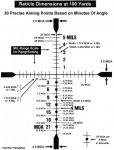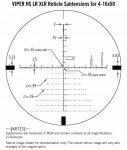Why is there a mil-dot but no MOA-dot? I doubt if there is any advantage, just wondering. I do think shooters would consider MOA before mils because it is the standard. MOA hash marks sound good but some are hard to see under some conditions so I've read.
Last edited:




